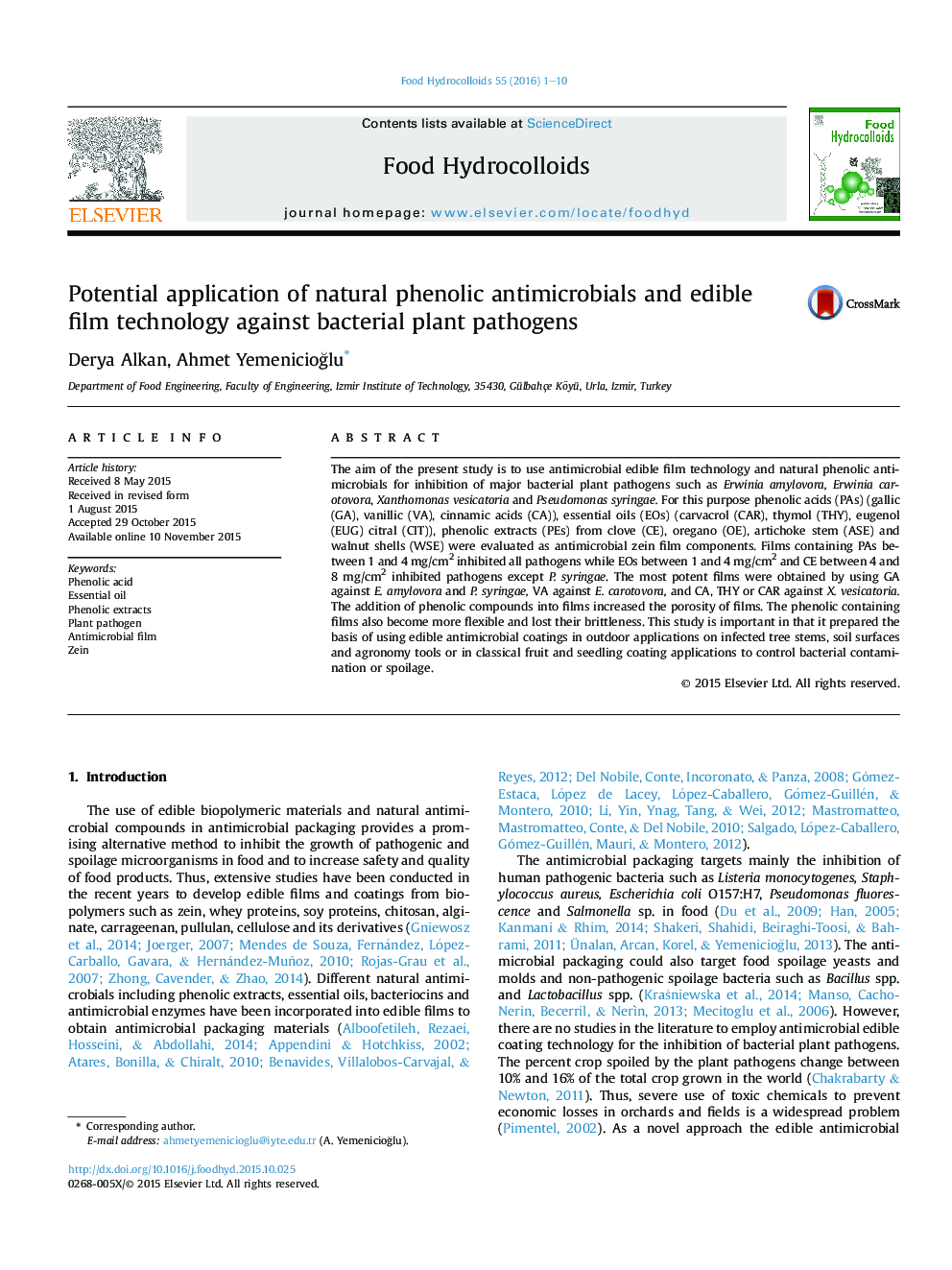| Article ID | Journal | Published Year | Pages | File Type |
|---|---|---|---|---|
| 603647 | Food Hydrocolloids | 2016 | 10 Pages |
•Zein films containing phenolic compounds are effective on bacterial plant pathogens.•P. syringae is the most resistant pathogen against phenolic acids, oils and extracts.•Gallic acid is the only compound that gave films effective on all plant pathogens.•Clove extracts are more potent than oregano, artichoke and walnut shell extracts.•Antimicrobial coatings provide an alternative nontoxic method against plant pathogens.
The aim of the present study is to use antimicrobial edible film technology and natural phenolic antimicrobials for inhibition of major bacterial plant pathogens such as Erwinia amylovora, Erwinia carotovora, Xanthomonas vesicatoria and Pseudomonas syringae. For this purpose phenolic acids (PAs) (gallic (GA), vanillic (VA), cinnamic acids (CA)), essential oils (EOs) (carvacrol (CAR), thymol (THY), eugenol (EUG) citral (CIT)), phenolic extracts (PEs) from clove (CE), oregano (OE), artichoke stem (ASE) and walnut shells (WSE) were evaluated as antimicrobial zein film components. Films containing PAs between 1 and 4 mg/cm2 inhibited all pathogens while EOs between 1 and 4 mg/cm2 and CE between 4 and 8 mg/cm2 inhibited pathogens except P. syringae. The most potent films were obtained by using GA against E. amylovora and P. syringae, VA against E. carotovora, and CA, THY or CAR against X. vesicatoria. The addition of phenolic compounds into films increased the porosity of films. The phenolic containing films also become more flexible and lost their brittleness. This study is important in that it prepared the basis of using edible antimicrobial coatings in outdoor applications on infected tree stems, soil surfaces and agronomy tools or in classical fruit and seedling coating applications to control bacterial contamination or spoilage.
Graphical abstractFigure optionsDownload full-size imageDownload as PowerPoint slide
